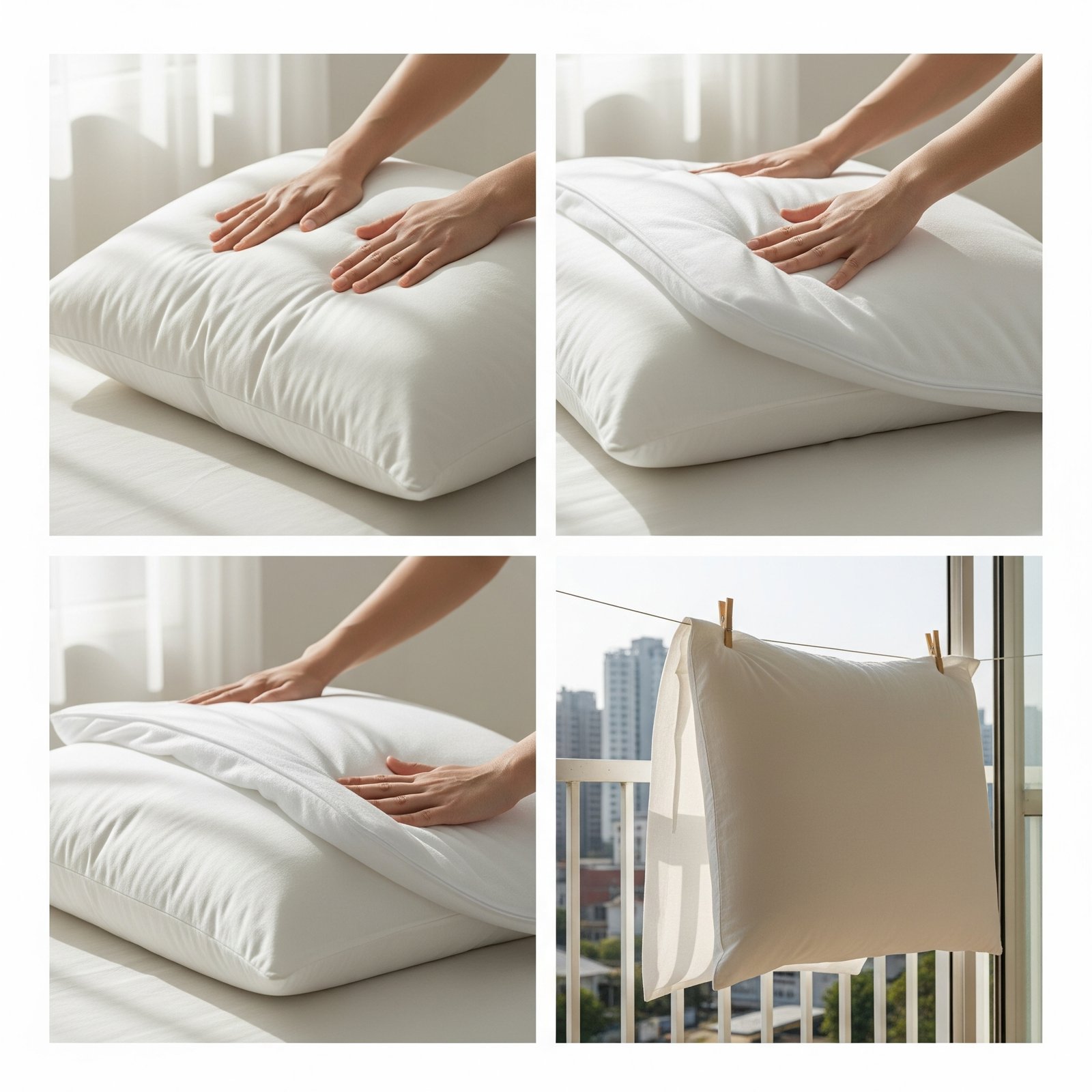
Sweet Dreams Start Here: How to Care for Your Pillow and Make It Last
You’ve found your perfect pillow—the one that cradles your head just right, supports your neck, and promises nights of blissful sleep. But your pillow’s journey doesn’t end when you take it home. Like any essential sleep item, pillows require proper care to maintain their support, cleanliness, and longevity. Neglecting them can lead to a build-up of allergens, loss of comfort, and a significantly shorter lifespan.
Ready to ensure your head’s best friend stays fresh and supportive for years to come? Let’s dive into the simple steps for caring for your pillow.
1. Read the Care Label (Seriously!)
This is the golden rule! Every pillow comes with a care label, and it’s your definitive guide to proper cleaning and maintenance. Different materials have vastly different care requirements. What’s safe for a synthetic pillow could ruin a memory foam or down one.
Common symbols to look for:
- Washing machine symbol: Indicates if it’s machine washable.
- Water temperature: Specifies hot, warm, or cold.
- Bleach triangle: If it can be bleached.
- Dryer circle: If it can be tumble dried, and at what heat.
- Do not wash/dry clean only: Crucial warnings!
2. Pillow Protectors: Your First Line of Defense
Consider a pillow protector your pillow’s bodyguard. This zippered case goes on underneath your pillowcase and offers an invaluable layer of protection.
- Blocks Allergens: Creates a barrier against dust mites, pet dander, and other allergens that can penetrate your pillow.
- Repels Stains & Moisture: Protects against sweat, oils, drool, and accidental spills, which can stain and break down pillow materials.
- Extends Lifespan: By keeping the pillow’s core cleaner and drier, it helps maintain its integrity and support for longer.
Look for protectors that are breathable, waterproof or water-resistant, and machine washable.
3. Regular Washing (Pillowcases & Pillows)
Pillowcases: Your pillowcases should be washed at least once a week, or more frequently if you sweat a lot, have allergies, or use hair products. This removes surface dirt, oils, and dead skin cells before they can transfer to your pillow.
Pillows: How often you wash your actual pillow depends on its material:
- Synthetic (Polyester Fiberfill) & Down/Feather: Most can be machine washed every 3-6 months. Use a gentle cycle with warm water and a mild detergent. For down/feather, add a couple of tennis balls to the dryer to fluff them back up.
- Memory Foam & Latex: These materials should NOT be machine washed. Water can break down their structure. Instead, spot clean any stains with a mild detergent and a damp cloth. Air them out regularly in a well-ventilated area away from direct sunlight (UV can degrade latex).
- Buckwheat Hulls: The hulls themselves should never be washed. You can empty the hulls into a bowl, wash the cover according to its label, and then refill the cover once dry. Air out the hulls periodically.
When machine washing pillows, wash two pillows at a time to balance the load in the washing machine and ensure they get thoroughly rinsed and spun.
4. Drying Your Pillow Thoroughly
Proper drying is just as important as washing, especially for machine-washable pillows. A damp pillow is an invitation for mold and mildew.
- Tumble Dry Low: Use a low heat setting for synthetic, down, and feather pillows. High heat can damage some fills.
- Add Dryer Balls: Toss in a few dryer balls (or clean tennis balls in socks) to help fluff the pillow and prevent clumping, especially for down and synthetic fills.
- Check for Dampness: Ensure the pillow is completely dry before putting it back on your bed. Squeeze and feel for any damp spots. This might take several cycles, especially for thicker pillows. If you can, air dry it for a few hours after machine drying.
5. Fluffing and Airing Out
Even if your pillow isn’t due for a full wash, regular fluffing and airing can make a big difference.
- Daily Fluffing: Give your pillow a good fluff every morning to help redistribute the fill and restore its loft. This is particularly important for down, feather, and synthetic pillows.
- Regular Airing: Every few weeks, strip your bed and let your pillows air out for a few hours. This helps evaporate any trapped moisture and can refresh the pillow, especially for materials that aren’t washable. You can even hang them outdoors on a sunny, breezy day (avoid direct, harsh sunlight for memory foam/latex).
6. Know When to Say Goodbye
Even with the best care, pillows don’t last forever. Most pillows have a lifespan of 1 to 2 years for synthetic, 2-3 years for down/feather, and 3+ years for latex/memory foam.
Signs it’s time for a replacement:
- You wake up with neck pain or stiffness.
- Your pillow is lumpy, flat, or no longer provides support.
- You constantly punch or fold your pillow to get comfortable.
- It has permanent stains or an unpleasant odor that washing doesn’t remove.
- Your allergies seem worse at night.
By incorporating these simple care routines into your life, you’ll not only extend the life of your pillow but also ensure that your sleeping environment remains clean, comfortable, and conducive to the sweet dreams you deserve. Invest a little time in caring for your pillow, and it will continue to care for you night after night.
